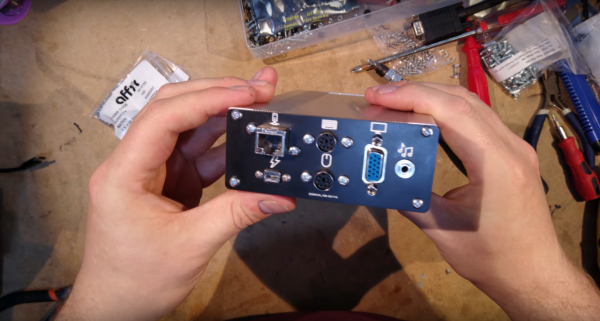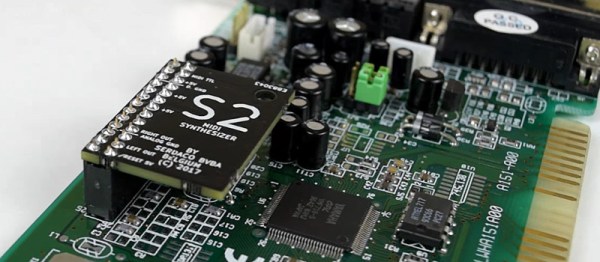What do you do when you find a ISA Sound Blaster 2.0 card in a pile of scrap? Try to repair the damage on it to give it a second shot at life, of course. This is what [Adrian Black] did with one hapless victim, with the card in question being mostly in good condition minus an IC that had been rather rudely removed. The core Creative CT1336A and Yamaha YM3812 ICs were still in place, so the task was to figure out what IC was missing, find a replacement and install it.
The CT1350 is the final revision of the original 8-bit ISA Sound Blaster card, with a number of upgrades that makes this actually quite a desirable soundcard. The CT1350B revision featured here on a card from 1994 was the last to retain compatibility with the C/MS chips featured on the original SB card. After consulting with [Alex] from the Bits und Bolts YT channel, it was found that not only is the missing IC merely an Intel 8051-based Atmel MCU, but replacements are readily available. After [Alex] sent him a few replacements with two versions of the firmware preflashed, all [Adrian] had to do was install one.
Before installation, [Adrian] tested the card to see whether the expected remaining functionality like the basic OPL2 soundchip worked, which was the case. Installing the new MCU got somewhat hairy as multiple damaged pads and traces were discovered, probably because the old chip was violently removed. Along the way of figuring out how important these damaged pads are, a reverse-engineered schematic of the card was discovered, which was super helpful.
Some awkward soldering later, the card’s Sound Blaster functionality sprung back to life, after nudging the volume dial on the card up from zero. Clearly the missing MCU was the only major issue with the card, along with the missing IO bracket, for which a replacement was printed after the video was recorded.
Continue reading “Reviving A Scrapped Sound Blaster 2.0 ISA Soundcard”


















